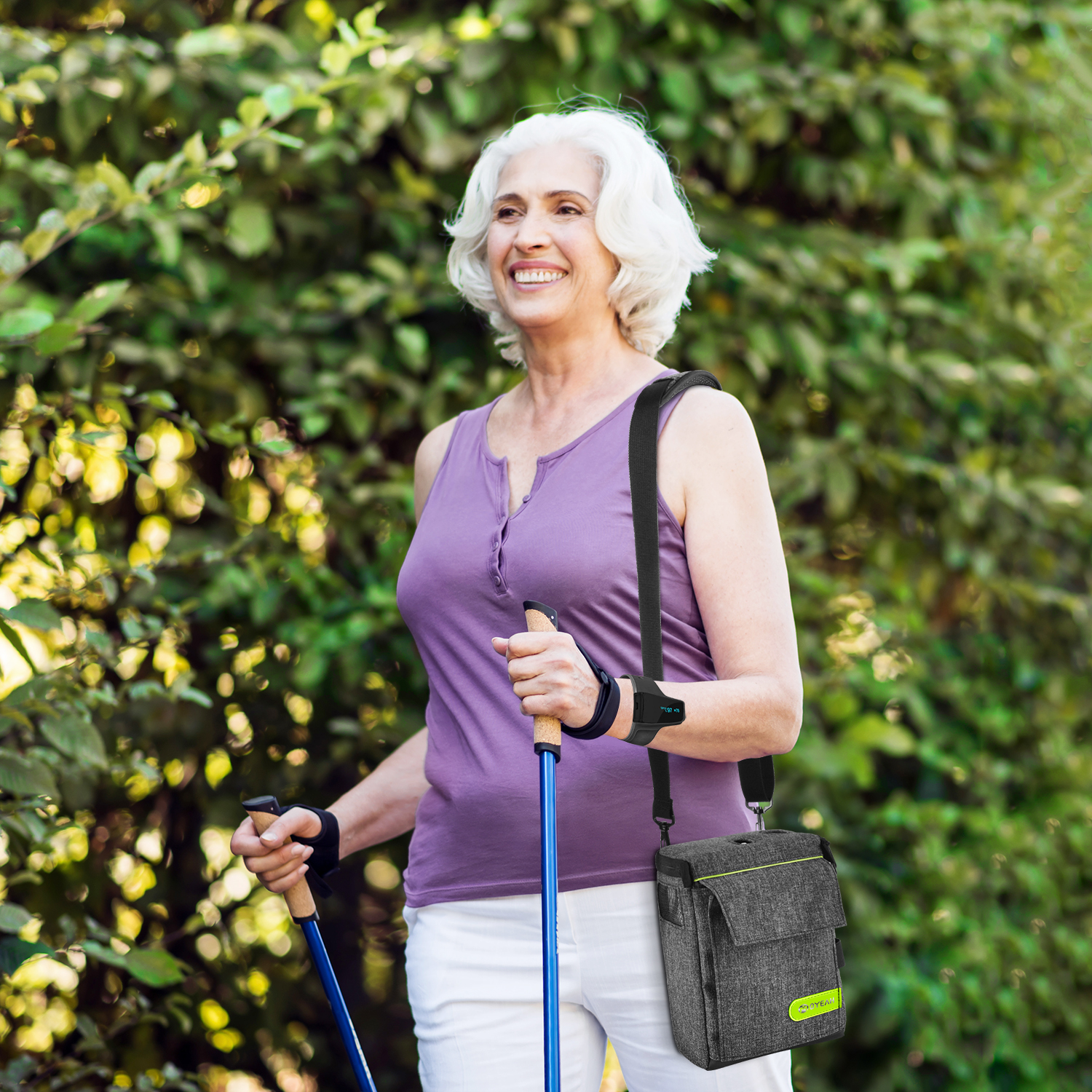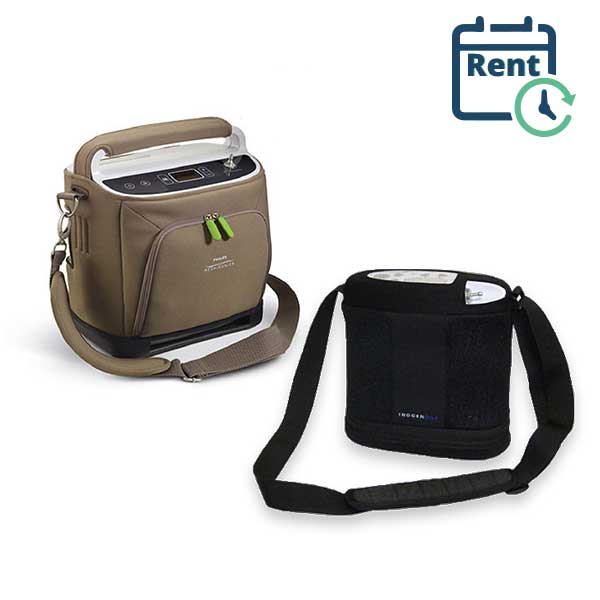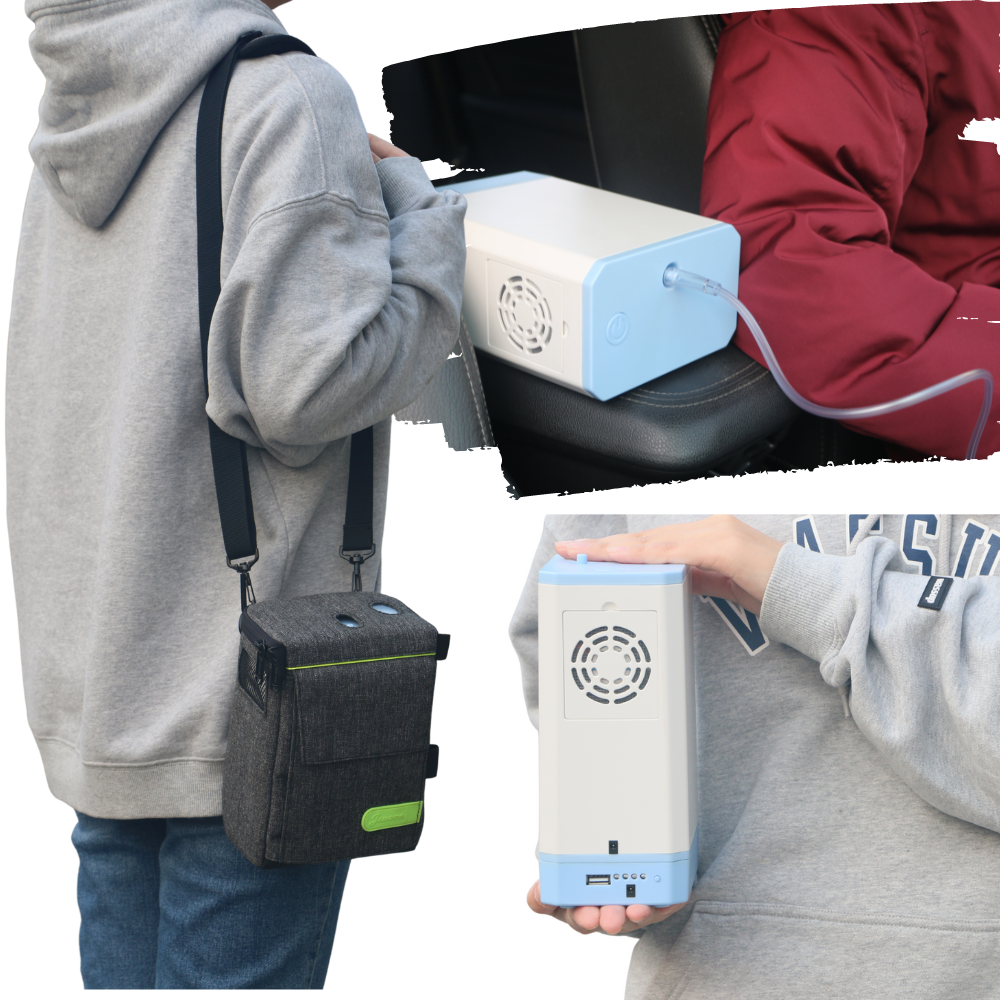Some Known Incorrect Statements About Portable Oxygen Concentrators
Wiki Article
The smart Trick of Portable Oxygen Concentrators That Nobody is Talking About
Table of ContentsThe Only Guide to Portable Oxygen ConcentratorsHow Portable Oxygen Concentrators can Save You Time, Stress, and Money.The Of Portable Oxygen ConcentratorsThe Best Guide To Portable Oxygen Concentrators
Stationary oxygen concentrators were as soon as the requirement, however these containers might consider 50 extra pounds and were extremely troublesome (Portable Oxygen Concentrators). Currently, portable oxygen concentrators obtain the job done, and they can fit right into a purse or bag! The only point you ought to maintain in mind is that mobile concentrators have much more limited oxygen distribution abilitiesThere are 2 major kinds of mobile oxygen concentrators: pulse dose and continual circulation. As the name suggests, pulse dose concentrators provide oxygen periodically, just activating when you breathe in. This type of gadget is usually suggested for COPD patients with minimal oxygen needs, as the amount of O2 that a pulse dosage concentrator can provide is reasonably low.
This device can provide up to 3,000 m, L of oxygen every minute, while pulse dose devices tend to cover out at 1250 m, L. Continual flow tools are the go-to for a lot of COPD clients, as they're ideal for individuals who require two to five litres of oxygen a min.
Now that you have this guide to the different types of portable oxygen makers, pick the best tool with the help of your medical professional.
Things about Portable Oxygen Concentrators
We realize Americans utilize residential versions in home treatment situations. We asked yourself just how well these mobile oxygen concentrators would work in health centers. POC concentrators boost the proportion of oxygen in ambient air people take in, whenever they require a boost. Private-use ones are little enough to carry around, and might help avoid the requirement to go to stuffed facilities and healthcare facilities.When it involves portable oxygen treatment, there are 2 primary choices for distribution. These are mobile oxygen cylinders which have compressed oxygen gas, or oxygen concentrators, which utilize a battery powered system to compress and filter air, in order to develop a consistent supply of focused oxygen. In this post, AMS Composite Cylinders Technical Supervisor, Tony Morrin, compares both, considering the pros and cons of each oxygen delivery system for NHS clinical oxygen customers in regards to person autonomy.

Portable Oxygen Concentrator Oxygen pureness is consistently greater when provided from cylinders it never goes down listed below 99. 6%, no matter the circulation price called for. In battery-powered concentrators, pureness is impacted by circulation rate, and may be 90% or less, relying additional info on the equipment. Whilst oxygen concentrators can be valuable for patients that call for a reduced flow of oxygen, cylinders give higher focus that can be better for people with high circulation demands.
The Of Portable Oxygen Concentrators
Both systems need the patient to carry around devices. For cyndrical tubes, this will certainly consist of bring a bag (and sometimes a trolley) and for mobile oxygen concentrators this will include the bag, trolley and power charger. Weight sensible, mobile oxygen concentrators can be equivalent in weight, or often, lighter than standard special info aluminium cyndrical tube systems.
They will have to boost considerably if they are to provide the same level of performance as equivalent composite cyndrical tubes. Oxygen constantly brings a safety and security danger. On one hand, need to cylinders spring a leakage, they can produce an oxygen rich setting that might lead to an increase in fire risk.

The distinction is that there are significant ahead of time prices see page to buying a portable oxygen concentrator, yet reduced running costs using cyndrical tubes enables the buyer to spread out the cost over an extensive duration of time. One minor disadvantage of a portable oxygen concentrator is the sound mobile systems make a significant quantity of noise during operation, which several clients find distracting.
Rumored Buzz on Portable Oxygen Concentrators

Our premium carbon composite cylinders use high pressure (300 Bar), reduced weight, and NLL (Non-Limited Life) efficiency, and are certified for use worldwide. Further info concerning AMS Composite Cylinders Ltd can be found at .
Oxygen concentrators are made with user wheelchair in mind. Whether it's a desktop computer variation for home usage or a smaller sized, light-weight model for on-the-go, these gadgets allow patients to move freely without being connected to a fixed unit. Specifically for the ones specifically created for portability, clients can carry them about, promoting traveling and daily tasks with ease.
Among the significant conveniences of using an oxygen concentrator is the elimination of the frequent need to refill oxygen storage tanks. This not just lowers the logistical difficulties and reoccurring costs related to refills however additionally guarantees that the individual has a more predictable and constant source of oxygen. Oxygen concentrators are created to fit seamlessly right into the home atmosphere.
Report this wiki page